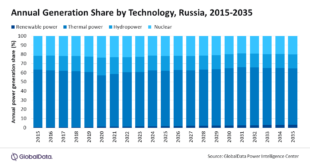To be an industry-leading and high-valued business in the modern day it’s essential that the most advanced technology in the relevant industry is being utilised, and is a key component to the running of the business. Matthew Margetts highlights the benefits and necessity of using smart technology to make your business as successful as possible and ultimately as valuable as possible, should an exit strategy ever be considered
What makes a business saleable? From profitability to the state of future revenues, business processes come under scrutiny by potential buyers. The business landscape is ever-evolving and the COVID-19 pandemic saw digital transformation accelerate by several years. This means digital fluency is becoming the norm for businesses.
Quite simply, the result is that business owners need to look at digital strategy as part of their succession plans. Within these processes of digitalisation, smart technologies and big data are set to dominate for their simple, powerful applications – attractive for being plug-and-play, scalable, and easily integrated into existing systems.
As proof of innovation and forward planning, the adoption of such technologies speaks to a culture of flexibility and adaptability. That’s only on the face of it. Ultimately, using data means technology permeates everything from internal operations to customer experience and broader strategy.
IoT spending in 2023 is predicted to reach $1 trillion. As IoT and smart technologies become ubiquitous, this is an assurance of competitive advantage and an investment in ongoing optimisation.
1. Maximised productivity
Information around bottlenecks and hindrances paves the way for increased productivity. Smart technologies provide data insights on whole-operations performance. This allows business owners to quickly identify areas of improvement. It also creates scope for digital twinning and low-risk strategic methodologies with far reduced risk.
Together with improved productivity, reduced waste speaks directly to profitability, cost-effectiveness, and efficiencies – and supports a growth curve that’s related to data-inspired trends within a business.
2. Fine-tuned customer service
Using smart technologies impacts how customers are acquired and retained. In retail, for example, understanding customer data in relation to products and services gives business owners a unique perspective on how to predict the optimal customer experience and adapt to their needs. This could encompass everything from inventory management to data-driven customer journey mapping and marketing.
By streamlining processes and ensuring clear workflows, customer service employees will be motivated and unhindered in providing exceptional customer service. These technologies allow for monitored customer engagement with products and solutions. This creates opportunities for personalised user experiences, audience building, and enhanced delivery.
Remote working, self-service trends, and buy online pick up in-store (BOPIS) mean that sales and service representatives may be located offsite and more intuitive and automated processes are required for successful customer interactions. Smart technologies can be used as a tool to help sales professionals assist customers and troubleshoot issues.
3. Guiding automation
Smart technologies also lay the foundation for automation. Automation allows employees to perform their roles more efficiently, apply themselves to more complex processes and innovation, and provide more personalised interactions with customers.
4. Employee satisfaction and working conditions
The traditional workplace has changed and the ability to seamlessly adopt mobile and remote workplaces are important for both employee satisfaction, collaboration, and agility. Smart technologies affect employees in many ways. They can serve as the tools they use to best perform their roles. Equally, they can ensure optimal workplace conditions, well-being, and health and safety measures.
This has a knock-on effect when it comes to staff retention and productivity. It may also have a bearing on the physical office environment and provide cost-savings potential.
5. Monitoring for management
Effective monitoring is the cornerstone of effective management. Whether on a single project basis or across entire value and supply chains, smart technologies provide real-time data insights on single assets or entire systems. This has the potential to revolutionise management.
In the retail sector, smart technologies can be used for inventory management, for example. With BOPIS and ecommerce on the rise, a real-time view of stock levels drastically reduces manual inventory and warehouse management processes, as well as supply chain disruption, and increases chances of fulfilment for customers.
Additionally, there is a security benefit across everything from critical machinery and assets to stock in a self-service retail setting.
6. Sustainable practices
Understanding resource usage is the first step in preventing waste and securing the most sustainable approach. Smart technologies map usage and identify areas of potential behaviour shifts. This guides businesses in sustainability initiatives and the adoption of greener processes.
As environmental compliance requirements become more onerous, this data is collected and securely stored on a cloud-based dashboard for compliance reporting.
7. Agility and flexibility
The most effective corporate strategies are interlinked with digital strategies. The COVID-19 pandemic underscored the importance of technological innovation and investment in times of crisis and change. This has resulted in the widespread acknowledgment of digital processes as the hallmarks of ongoing success.
There is tactical benefit to the collection and analysis of data, but it also provides flexibility to adapt to conditions as required. This provides a level of resilience that is attractive for safeguarding revenues and investments.
Matthew Margetts is a Director at Smarter Technologies.
 Engineer News Network The ultimate online news and information resource for today’s engineer
Engineer News Network The ultimate online news and information resource for today’s engineer



